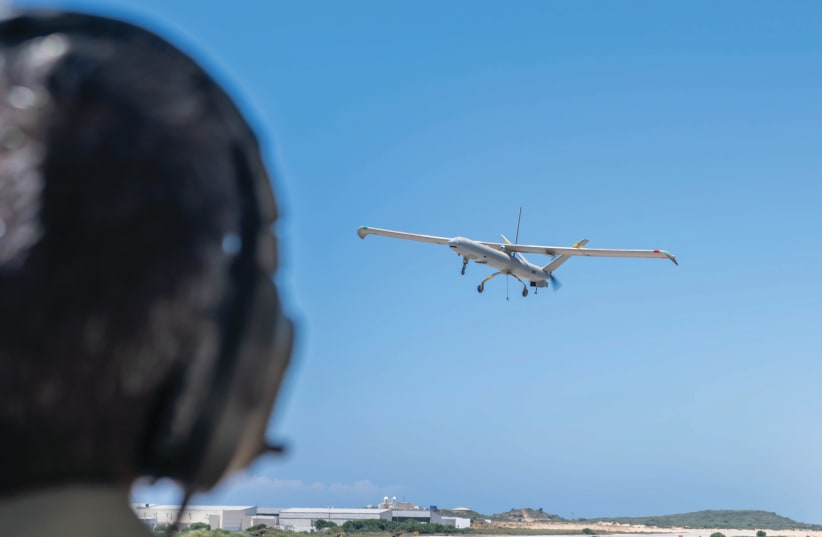Iran’s S-300 air defense in Isfahan, which protects its key Natanz nuclear site, was destroyed without detection by long-range missiles fired from outside Iranian air space, sources and multiple satellite imagery posts confirmed by Saturday.
The New York Times, Fox News, and other foreign reports said that Israel undertook the attack, though Jerusalem has been silent about it.
It was still unclear Saturday whether drones had played some role in the attack as well.
US Senator Marco Rubio tweeted, “Israel has the ability to conduct strikes against targets inside Iran without entering Iranian air space from aircraft over Syrian and Iraqi airspace.”
Both Rubio’s comment and foreign reports indicated that the first stage of a two-stage Israeli-made missile may have been found in Iraq and may have been fired from there.
Foreign reports said that the missiles were not fired from Iranian, Israeli, or Jordanian airspace.
Strategic attack sends message to Iran
Such an attack could have two intended effects: the impact of messaging to the Iranians that their nuclear facilities could have also been hit or could easily be hit in the future and letting the Islamic Republic end the crisis by denying any real damage.
Unlike Iran’s nuclear facilities at Natanz, Karaj, and elsewhere, where Tehran has had to acknowledge their destruction in the past because they are open to visits from the International Atomic Energy Agency, Iran can keep the public away from seeing its losses of the S-300 missile defense system (other than via satellite imagery).
But the loss is significant in the sense that the S-300 is the most advanced anti-aircraft system the Islamic Republic possesses, which it spent years pressing Russia to sell it.
On the other hand, this attack could be called much less bruising of Iran’s attack capabilities than the one by Israel that destroyed huge numbers of its drone fleet in February 2022, which former prime minister Naftali Bennett has publicly confirmed.
Further, the attack did not directly touch Iran’s nuclear program, which means that the program has not been set back.
The Jerusalem Post was the first to confirm that long-range missiles had been used in the attack early Friday morning.
The New York Times was the first to confirm Israeli involvement.
Iran, it appears falsely, has claimed that there was no damage and that it shot down a few minor drones that tried to attack.
On Sunday morning, Iran International published footage of the damage caused to the Isfahan base as a result of the strike.
Analysis of satellite imagery obtained by Iran International confirms media reports that a central part of the S-300 air defense system at an Iranian air base in Isfahan was hit by a presumed Israeli attack early Friday. @FardadFarahzad via @SkyWatchApps pic.twitter.com/s8ViDTqcFh
— Iran International English (@IranIntl_En) April 21, 2024
The report came shortly after local sources reported explosions in Isfahan in central Iran, in the As-Suwayda Governorate of southern Syria, and in the Baghdad area and Babil Governorate of Iraq early Friday morning.
A US official then told CNN that the Iranian target was not nuclear. Videos from Isfahan appeared to show Iranian air defenses activated in the skies over the area.
A senior US official also confirmed this on the Friday morning of the attack, stating, “We were not surprised,” while also telling Walla that Israel informed the US in advance of the strike.
The Iranian semi-official Fars News Agency reported on Friday that an explosion was heard in Qahjavarestan, east of Isfahan and near the Isfahan International Airport. Fars stressed that the cause of the explosion was unknown as of yet.
Fars and other Iranian news agencies reported that air defenses were seemingly activated near Isfahan in response to small drones.
Iranian air defenses were also activated in Tabriz in northwestern Iran on Friday morning after a suspicious object was spotted in the air, according to Fars.
According to Bloomberg News, Israeli officials notified the US on Thursday that they planned to launch a strike in the next 24-48 hours.
Syrian reports on Friday morning indicated airstrikes had also targeted sites belonging to the Syrian Army in the As-Suwayda and Daraa Governorates of southern Syria.
The explosions came as Israel promised to respond to a massive drone and missile attack conducted by Iran on April 14 against Israel.
The Iranian attack came in response to an alleged Israeli airstrike that targeted a building next to the Iranian embassy in Damascus, and that killed Mohammad Reza Zahedi, a senior IRGC commander in charge of Iran’s operations in Syria and Lebanon.
In January 2023, a mix of Western intelligence and foreign sources told the Post that despite Iranian claims to the contrary, a drone attack on Iran at Isfahan, in a similar general area to the attack Friday morning, was a tremendous success.
Tzvi Joffre contributed to this report.

